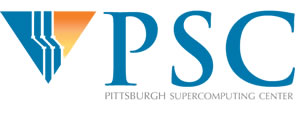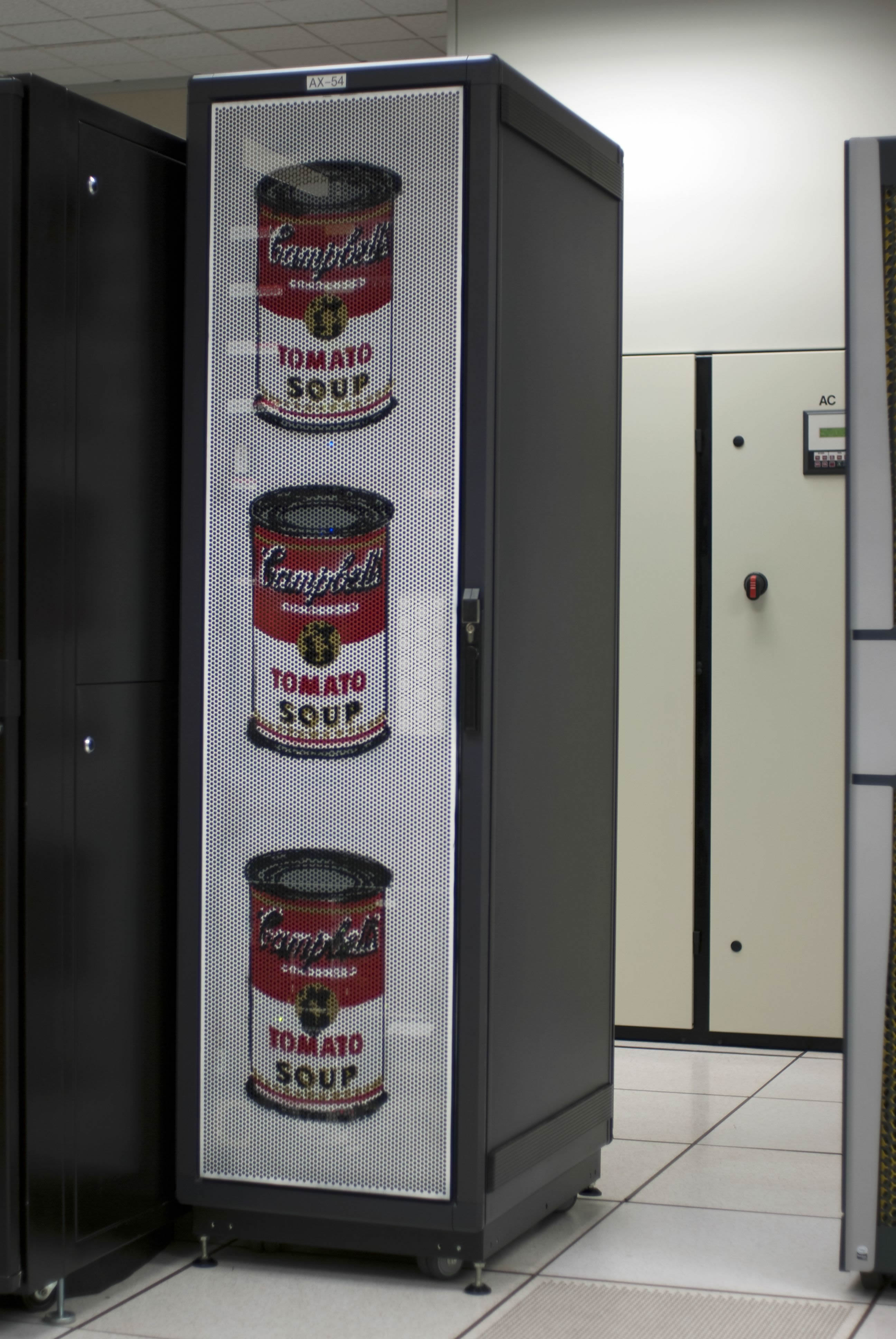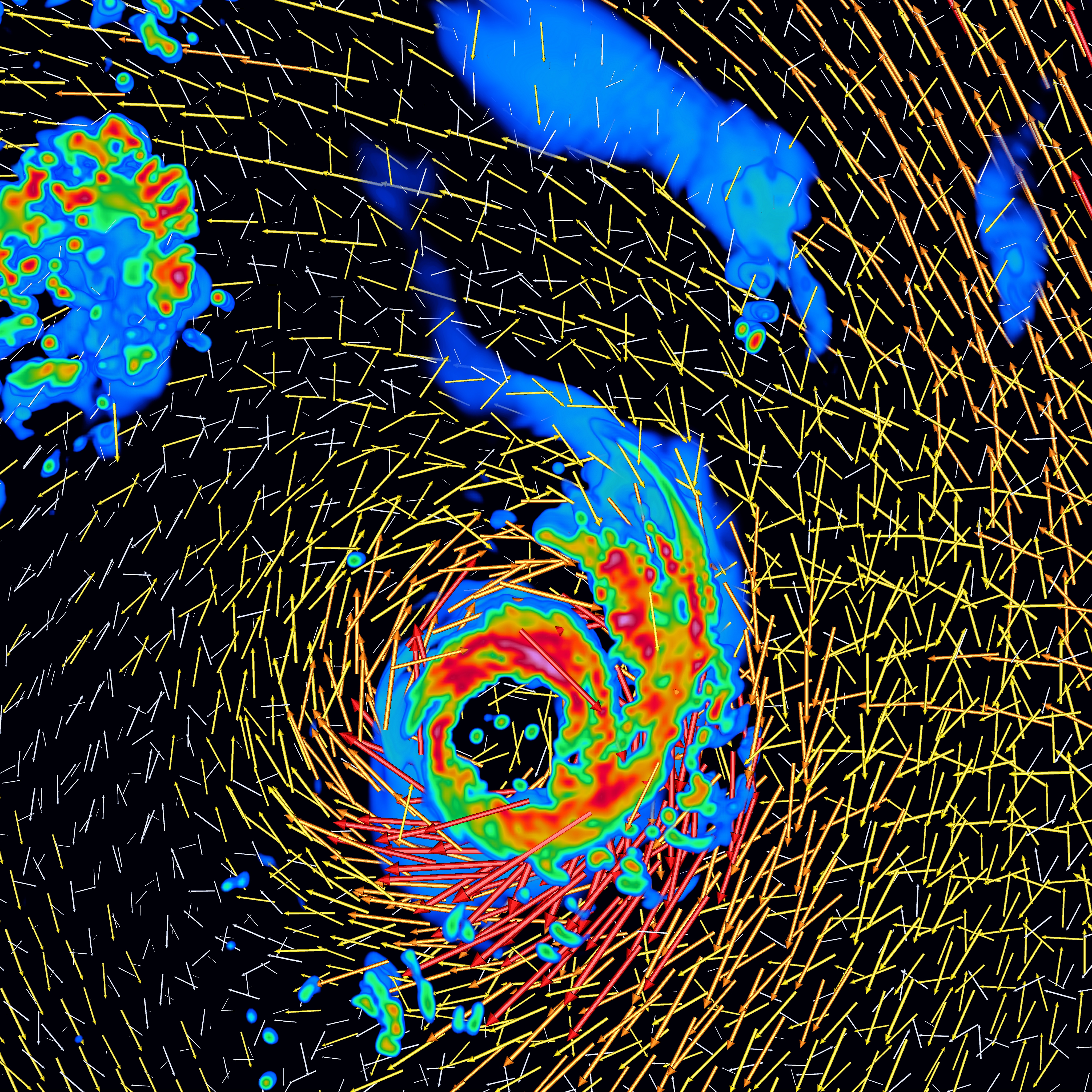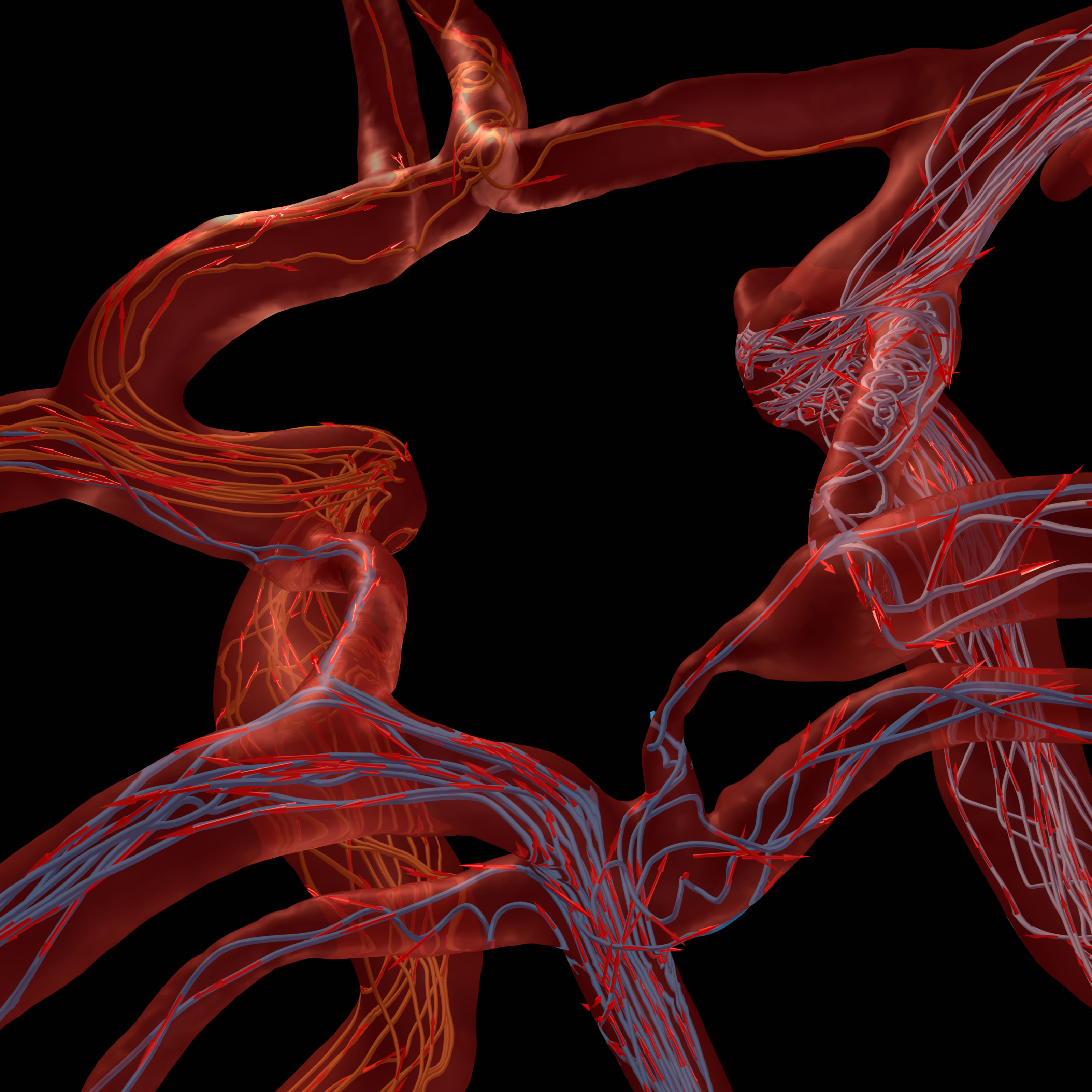
The cone snail, measuring from 1 to 9 inches long, has a temptingly beautiful shell; however, reaching for a live cone snail can be a deadly mistake. When frightened, cone snails launch a harpoon tipped with a poison capable of killing humans. This venom is now being researched at the Pittsburgh Supercomputing Center as a non-addictive painkiller that has the potential to be 1000 times as effective as morphine. Research on this scale needs simulations of molecular interactions using supercomputing-class resources. The Pittsburgh Supercomputing Center makes research such as this possible. Scientists throughout the United States can apply to use the Center’s resources to accomplish research that would otherwise be impossible. The Pittsburgh Supercomputing Center has undoubtedly left an indelible impression on national-scale research and educational programs in Pennsylvania and around the world.
In 1986, two professors were enjoying a casual lunch when the discussion turned to a request for proposals from the National Science Foundation. The National Science Foundation was offering to provide funding for supercomputing centers in the United States. The professors, Michael Levine and Ralph Roskies, submitted a proposal that laid the basis for what is now the Pittsburgh Supercomputing Center. The Center was established in 1986 as a collaborative effort between Westinghouse Electric Company, the University of Pittsburgh, and Carnegie Mellon University. The goal of the Pittsburgh Supercomputing Center is to provide supercomputing resources to researchers across the United States. It has become an integral part of several research organizations and houses an impressive array of supercomputing capabilities. Beverly Clayton, the director of the Center, said in an interview, “We’ve made our facilities available for private and government use and we see that the nation’s researchers are insatiable in developing models that require the use of supercomputers. Now as much as ever.”

One frequent user established at the Pittsburgh Supercomputing Center is the National Resource for Biomedical Supercomputing. Founded in 1987, it was the first biomedical supercomputing program to be funded by the National Institutes of Health. The organization focuses on researching microphysiology, volumetric visualization, and computational structural biology. Recently, it has provided resources for researchers working on image-based diagnosis of diseases. A study from Johns Hopkins University found that 2-3% of patients receive the wrong diagnosis when tested for cancer. This new project would try to eliminate those errors by providing doctors with a program that analyzes a picture of a patient’s tissue and compares it to other pictures in the database.
To support the National Resource for Biomedical Supercomputing as well as other organizations and researchers, the Pittsburgh Supercomputing Center houses several supercomputers. A supercomputer is a large computational device that breaks large problems into smaller sub-problems and distributes them across several processing units, the brains of a computer. Supercomputers have a large amount of processing power and run problems that require the resolution of massive systems of equations. Examples of research types that require supercomputers are climate modeling, astrophysics, and molecular dynamics.
The five supercomputers at the Pittsburgh Supercomputing Center are called: Bigben, Pople, Salk, Codon, and Warhol. All of the computers, excluding Codon, were named for famous people related to the Pittsburgh area. The names for the supercomputers were inspired by:
- The Pittsburgh Steelers quarterback, Ben Roethlisberger, commonly referred to as “Big Ben”
- John Pople, whose work on quantum chemistry while living in Pennsylvania earned the Nobel Prize for Chemistry in 1998.
- Jonas Salk, the inventor of the Polio vaccine and a graduate of the University of Pittsburgh Medical School
- The famous pop art painter, Andy Warhol, whose painting of a soup can is iconic
- The building blocks of genetic sequences, called codons

Computing: PSC and NICS
Visualization: Greg Foss, PSC
Copyright (c) 2009 Pittsburgh Supercomputing Center at Carnegie Mellon University. All Rights Reserved.
The power of a personal computer is nothing compared to the computers at the Pittsburgh Supercomputing Center. The processor on an average personal computer is capable of performing millions of calculations per second. Now, imagine a machine composed of 2,068 processors working together to solve large-scale problems. This is an accurate description of Bigben, one of the five supercomputers at the center. When Bigben was first introduced, it was capable of 10 trillion operations per second. An article by the Pittsburgh Supercomputing Center gives an idea of just how fast 10 trillion operations per second is, saying, “If every person on Earth, about 6.5 billion people, held a calculator and did one calculation per second, they would altogether still be 1,500 times slower than Bigben.” Before it was decommissioned in March 2010, Bigben was twice as fast, capable of performing 20 trillion calculations per second. Pople is the second most powerful resource, capable of performing 5.1 trillion calculations per second. When the resources of all five machines are counted, the Pittsburgh Supercomputing Center has a total of 3,064 processors, commonly called nodes, available for use. 144 of these nodes are reserved for biomedical research sponsored by the National Resource for Biomedical Supercomputing.
In addition to computing resources, the Center has a machine dedicated to containing archived files. The archive machine has 2 petabytes of memory, approximately 2 million gigabytes. This means that the Center’s archival system has roughly 6,250 times as much storage space as the average laptop. If researchers at the Pittsburgh Supercomputing Center decided to store movies on the archival system, the system would be capable of containing nearly 1,334,000 movies.
The Pittsburgh Supercomputing Center has a rich history of using its resources to participate in research projects. The center is one of the most influential supporting partners of the National Science Foundation’s TeraGrid and has also influenced all types of research. The Pittsburgh Supercomputing Center has done it all from simulating the spread of the H1N1 virus to discovering identity theft vulnerabilities resulting from publicly available data.
The TeraGrid allows researchers in the United States to apply for time on one of several supercomputing resources. The Pittsburgh Supercomputing Center, Indiana University, and many other locations with supercomputing capabilities provide the resources for the TeraGrid. Research, such as the development of medicine from cone snail venom, has been supported by the TeraGrid. The TeraGrid recently developed an application for the iPhone so that researchers can interactively submit tasks and check the status of supercomputing resources at any time.

Computing Support: David O'Neal, PSC
Visualization: Greg Foss, PSC
Copyright (c) 2009 Pittsburgh Supercomputing Center at Carnegie Mellon University. All Rights reserved.
Many researchers access the resources of the Pittsburgh Supercomputing Center without a grant from the TeraGrid. One example is the newly published research concerning publicly available data and Social Security Numbers. Recently, identify theft has become highly publicized, but many people are unaware of a study on publicly available data performed with resources at the Pittsburgh Supercomputing Center. The study found that using publicly available data, it is possible to accurately guess an individual’s Social Security Number. For smaller states, the researchers were capable of predicting the Social Security Number in 10 to 1,000 guesses. Acquisiti, the main researcher for the project, recommended that, “Given the inherent vulnerability of Social Security numbers, it is time to stop using them for verifying identities and redirect our efforts toward secure, privacy-preserving authentication methods.” Considering that many companies use Social Security Numbers for identification purposes, the findings of this study are frightening.
Research is not the only focus of the Pittsburgh Supercomputing Center. The center has also invested a large amount in developing educational programs for high schools, middle schools, and corporate environments in Pennsylvania. Its most notable programs are Computational Modules in Science Teaching (CMIST), and Wii Molecular Dynamics (WiiMD).
SAFE-Net, Safety Awareness for Everyone on the Net, aims to educate students, parents, and teachers about safety practices online. The motivation for this program was a 2006 study performed by Carnegie Mellon’s Cylab that suggested many students were not informed about risks and safe behavior online. The Pittsburgh Supercomputing Center responded by producing a curriculum aimed at informing students about cyber ethics, safety and security. Labs cover topics like anti-virus software, spam, and choosing strong passwords.

Visualization: Greg Foss, PSC
Copyright (c) 2009 Pittsburgh Supercomputing Center at Carnegie Mellon University. All Rights Reserved.
WiiMD also intends to interest students in science and technology. The molecular dynamics researchers at the Pittsburgh Supercomputing Center wanted to design a program that would interest younger students in science and specifically molecular dynamics, a form of computer simulation designed to learn about how molecules and atoms interact. The researchers came up with the unique combination of the Wii gaming device and large-scale simulations of molecules. Students can use the Wii remote to control the Bigben supercomputer and navigate through interactive educational scenes or play games like buckeyball bowling. Engadget, a popular technical news source, covered the technology in an article, noting that, “lecturing is so last year.” Researchers hope that the program will spark interest in the field of molecular dynamics.
Since it was established in 1986, the Pittsburgh Supercomputing Center has shaped national research and local educational programs. It has provided the resources for researchers across the United States as well as helping to fund several critical programs such as the National Resource for Biomedical Supercomputing. Research completed at the Pittsburgh Supercomputing Center has the potential to make incredible changes in everything from school closing policies or providing a non-addictive alternative to morphine
The Center would like to thank the Pittsburgh Supercomputing Center for its assistance in illustrating this article.
Sources:
- Academy of Achievement. “Jonas Salk Biography -- Academy of Achievement.” Academy of Achievement. 2 Feb. 2005. 29 Mar. 2010. <http://www.achievement.org/autodoc/page/sal0bio-1>.
- Acquisti, Alessandro. “Social Security Number Study.” Carnegie Mellon’s Heinz College. 2009. 22 Feb. 2010. <http://www.heinz.cmu.edu/~acquisti/ssnstudy/>.
- Beckman, P. H. “Building the TeraGrid.” Philosophical Transactions of the Royal Society London, Series A (Mathematical, Physical and Engineering Sciences) 363.1833 (2005): 1715-728.
- “Bigben.” Pittsburgh Supercomputing Center. 29 Jan. 2010. 3 Mar. 2010. <http://www.psc.edu/machines/cray/xt3/>.
- “High Performance Computing Drives a “Can-Do” Attitude at Alcoa.” Compete.org - The Council on Competitiveness. 2008. 4 Mar. 2010. <http://www.compete.org/publications/detail/495/high-performance-computin....
- “HPCwire: 2009 Annual HPCwire Readers’ Choice Awards.” HPC Wire: Global News and Information on High Performance Computing (HPC). 2009. 22 Feb. 2010. <http://www.hpcwire.com/specialfeatures/sc09/readerschoiceawards/2009_Ann....
- McCaulay, D., and Matt Link. “Research Data Storage Available to Researchers throughout the U.S. via the TeraGrid.” Proceedings of the 34th Annual ACM SIGUCCS Conference on User Services. Edmonton, Canada. New York: ACM. 231-34.
- Mihelich, Peggy. “Supercomputers Crunching Potato Chips, Proteins and Nuclear Bombs - CNN.com.” CNN. 8 Mar. 2007. 1 Apr. 2010. <http://www.cnn.com/2006/TECH/12/05/supercomputers/index.html>.
- Murph, Darren. Buckeyball Bowling. Digital image. Engadget. 5 Dec. 2007. 31 Mar. 2010. <http://www.engadget.com/2007/12/05/wiimote-used-in-buckyball-bowling-oth...>.
- Murph, Darren. “Wiimote Used in Buckyball Bowling, Other Educational Simulations.” Engadget. 5 Dec. 2007. 30 Mar. 2010. <http://www.engadget.com/2007/12/05/wiimote-used-in-buckyball-bowling-oth....
- National Resource for Biomedical Supercomputing. 2010. 3 Mar. 2010. <http://www.nrbsc.org/>.
- Pittsburgh Supercomputing Center. 22 Feb. 2010. <http://www.psc.edu/>.
- Pittsburgh Supercomputing Center. Bigben. Digital image. 21 Nov. 2006. 31 Mar. 2010. <http://www.psc.edu/publicinfo/news/2006/images/xt3.jpg>.
- Pittsburgh Supercomputing Center. Warhol. Digital image. 29 Jan. 2010. 30 Mar. 2010. <http://psc.edu/machines/hp/c3000/warhol-soup.jpg>.
- “Pittsburgh Supercomputing Center Joins Forces with Darkstrand to Advance Innovation and Collaboration.” Darkstrand Press. Darkstrand, 14 May 2009. 4 Mar. 2010. <http://www.darkstrand.com/press/?p=106>.
- Pople, John. “John Pople - Autobiography.” Nobelprize.org. 1999. 1 Apr. 2010. <http://nobelprize.org/nobel_prizes/chemistry/laureates/1998/pople-autobi....
- Porter, David, and Paul Woodward. Shear Between Two Gases. Digital image. Bursts in Stellar Turbulence. Pittsburgh Supercomputing Center, 2007. 3 Mar. 2010. <http://www.psc.edu/science/2007/turbulence.html/>.
- Porto, Casey. “Pittsburgh Supercomputing Center High School Initiative in Computational Science: Report on Findings (school Years: 1991–92, 1992–93, 1993–94).” Proceedings of the 1995 ACM/IEEE Conference on Supercomputing. Conference on High Performance Networking and Computing, San Diego, CA. ACM, 1995.
- Projects in Scientific Computing 2009. Rep. Pittsburgh Supercomputing Center, 2009. 3 Mar. 2010. <http://www.psc.edu/science/2009/>.
- SAFE-Net: Cyber Safety Awareness. 2008. Web. 27 Feb. 2010. <http://csa.3rox.net/>.
- TeraGrid. TeraGrid 2009 Science Highlights. 2009. TeraGrid News. TeraGrid, 2009. 3 Mar. 2010. <https://www.teragrid.org/c/document_library/get_file?uuid=07528b0e-2027-....
- Westropp, J.C., “The Pittsburgh Supercomputing Center,” Computational Science & Engineering, IEEE , vol.3, no.1, pp.8-12, Spring 1996
- Worlton, John. “Pittsburgh Supercomputing Center Celebrates Its 20th Birthday.” Carnegie Mellon University. 15 June 2006. 31 Mar. 2010. <http://www.cmu.edu/cmnews/extra/060615_psc.html>.
